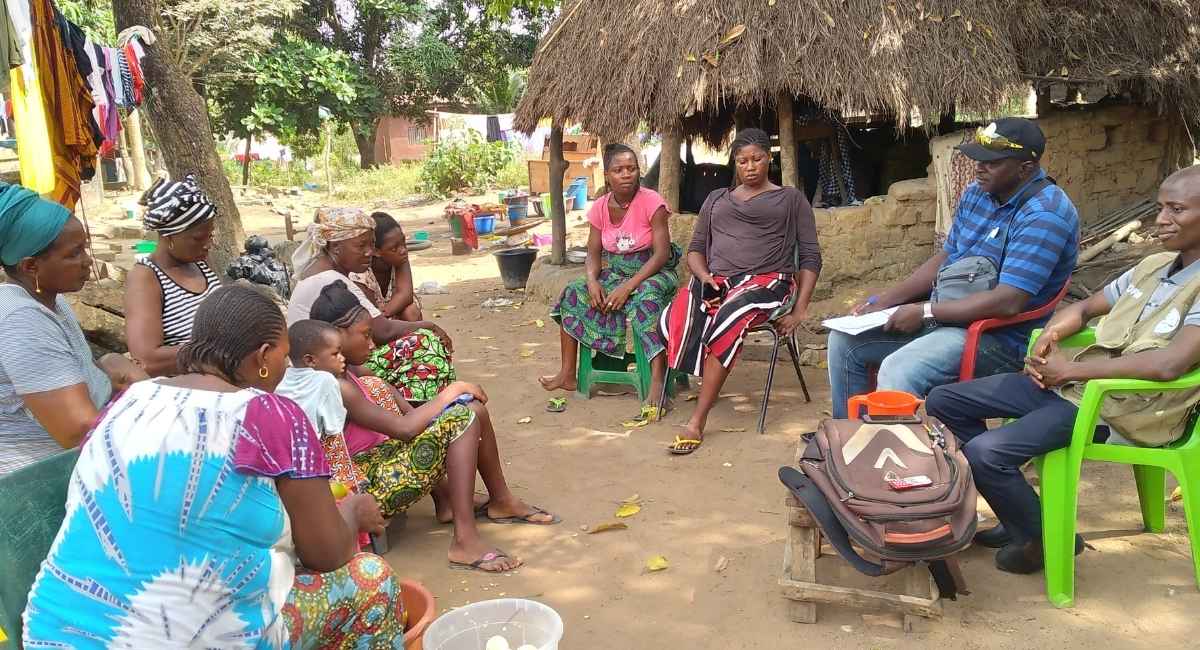In the north-east of Madagascar, in the dense forest or turquoise waters of Île Sainte-Marie, dealing with ecological issues is not just the business of experts, it is also carried out by the women and men who live there on a daily basis, and who made it possible to lay the bases for a protected marine and terrestrial area covering 265,000 hectares. On this island, protection of biodiversity takes place in a different form.
Although customary practices still play an essential role in conservation of the island’s natural resources, they alone are no longer sufficient to slow down degradation of the latter. “The inhabitants are aware of the growing pressures placed on ecosystems, and they themselves expressed the need to create a protected area”, explains Francko, chairperson of the PCADDISM association, which brings people living in Sainte-Marie together.
In light of the above, the Tsarakobaby project came about. It is being conducted by GRET in close collaboration with PCADDISM. GRET is supporting the local population through a commons-based approach, to create this protected area by implementing regulatory structures reconciling conservation of ecosystems, respect for local traditions, and responses to the population’s economic needs. On this island, where fishing, agriculture and tourism are the main sources of income for inhabitants, the challenge is substantial.
Involving communities in management of the protected area
The project is based on two fundamental principles: citizen mobilisation and shared governance. Successive public consultations took place in the 17 fokontany[1] and with Sainte-Marie’s various development actors to enable everyone to express their vision of the environment and participate in drawing up rules for joint management of the protected area.
“Thanks to the public consultations, we were able to draw up a global development plan enabling the definition of conservation zones and development zones in Sainte-Marie”, explains Mahandrizo Rakotovao, project manager at GRET.
Protecting nature while improving living conditions
In order for the population to really benefit from conservation, the project is also supporting sustainable development activities. More than 200 households benefitted from training on agroecology, the introduction of cash crops, and the provision of agricultural inputs. “I chose to become a nurseryman because it enables me to support myself while participating in forest restoration”, says Kintsy, who is being supported by the project. Local management structures such as the Vondron’Olona Ifotony[2] in St. Joseph also received support for the restoration of mangroves. To date, almost three hectares of mangroves have been restored. The project is also encouraging the development of responsible ecotourism in rural zones. The objective is to enable local communities to benefit directly from the economic impacts of tourism, while enhancing their natural heritage.
This excellent example of shared governance could very well inspire a new way of sustainably protecting our marine ecosystems.
Signature of a funding agreement for the Tsarakobaby II project
On World Environment Day, which was celebrated in Sainte-Marie under the auspices of the Ministry of the Environment, GRET, the Foundation for Protected Areas and Biodiversity in Madagascar (FAPBM) and the GEF6-AMPs programme signed a funding agreement for the Tsarakobaby project. This financial support is part of the national initiative to extend and reinforce Protected Marine Areas, led by the GEF6-AMP programme in Madagascar. The next crucial stage of this process will be the validation of the site’s temporary protected status, which is expected to take place during this month of June.
[1] Malagasy administrative division
[2] Vondron’Olona Ifotony means grass-roots community: this association is made up of volunteers living in an area with a wealth of natural resources. Recognised by the Malagasy State, its role is to conserve and manage natural resources in a given territory.




